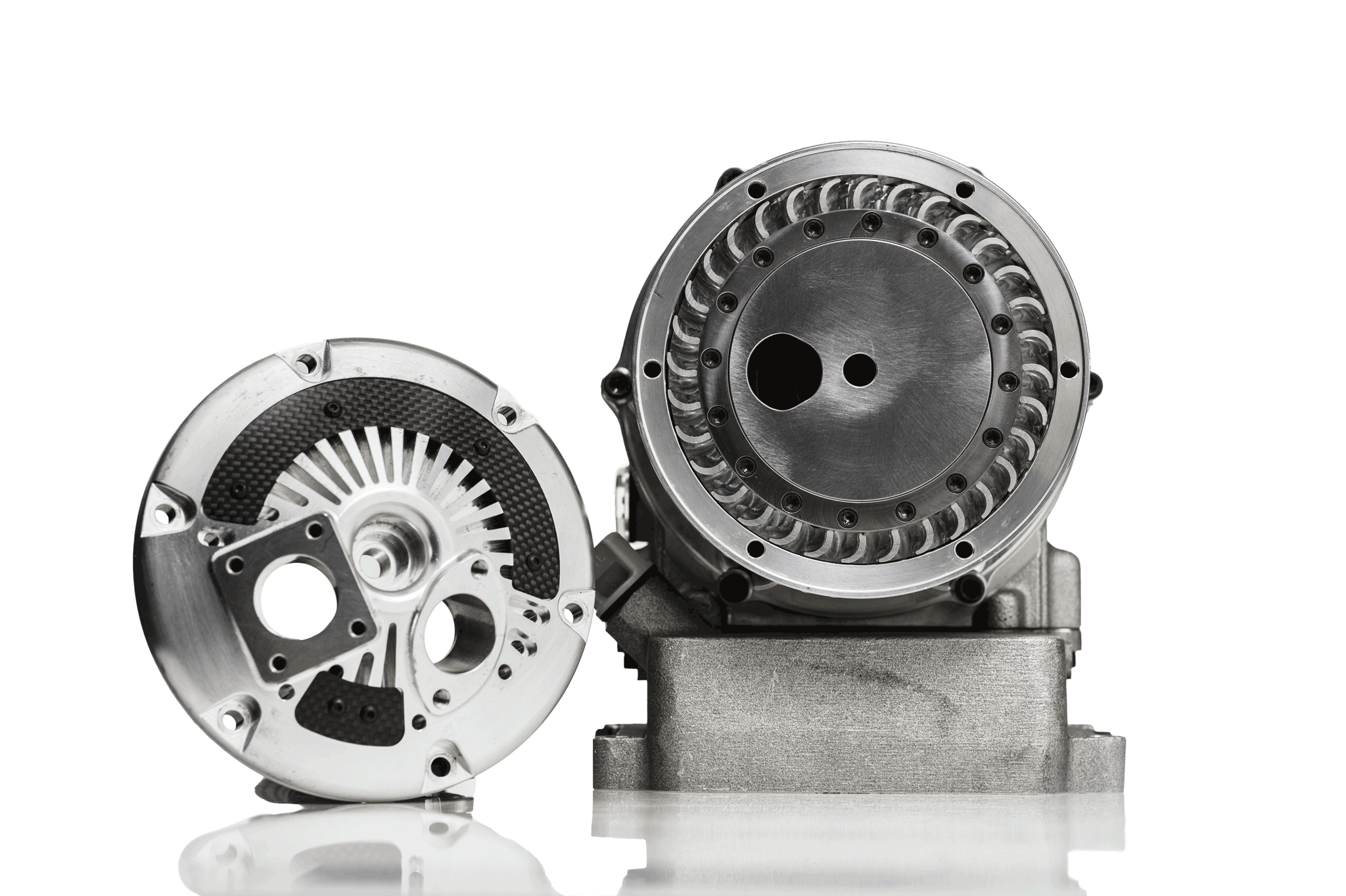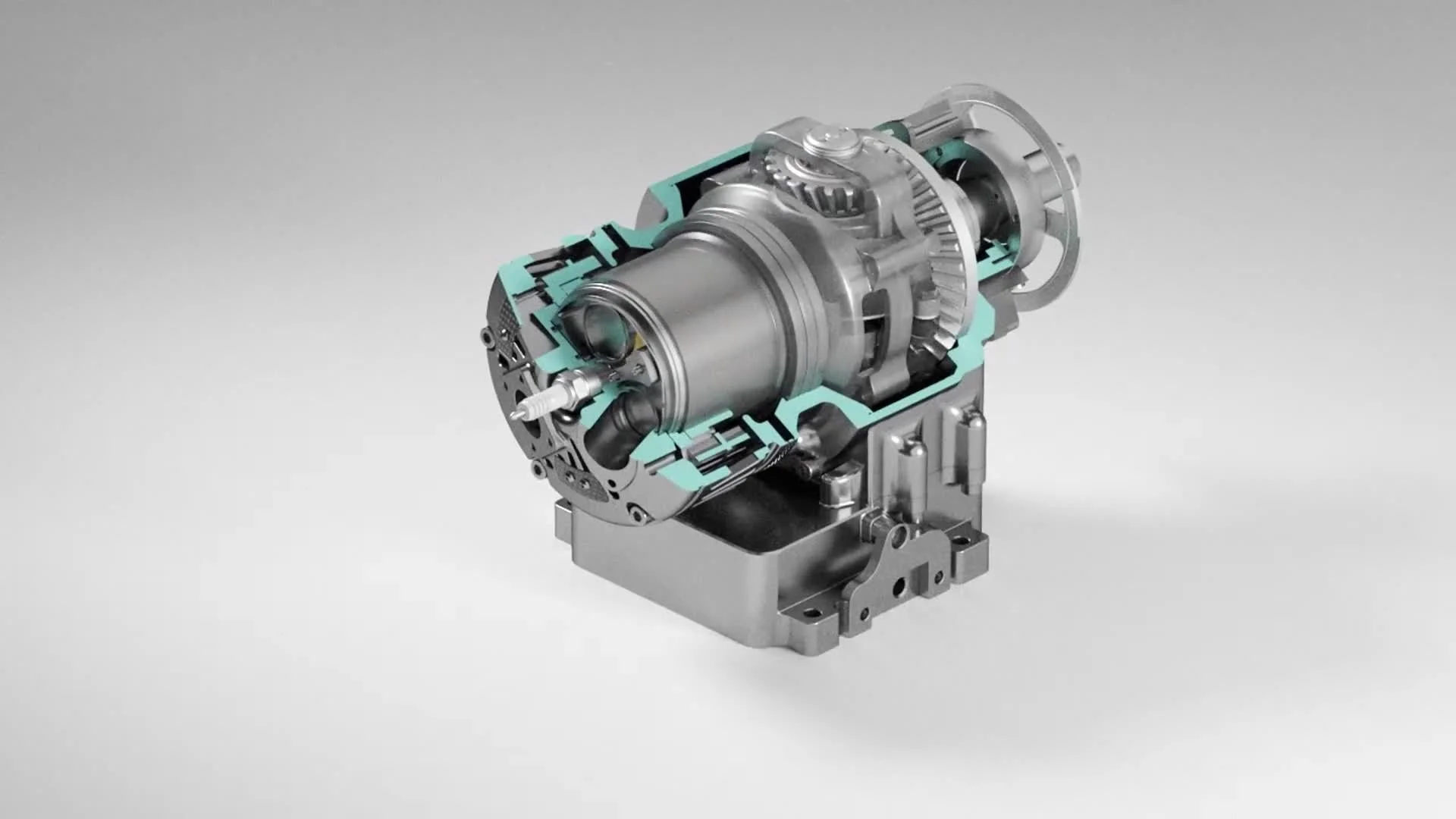
The Avadi team is dedicated to innovation. We’ve spent years re-imagining internal combustion engine design and have now developed and successfully patented one of the most fuel-efficient, lightweight and forward-thinking engines in the world today. Our vision is to advance a proven technology and create a family of lighter, smaller, eco-friendly engines that will help to create a cleaner, better world.
-
The 4-stroke, Avadi MA-250 gas engine has been designed with the principle of minimalism and simplicity, effectively re-imagining everything about a traditional piston-driven internal combustion engine. The result is a dynamically superior power unit.
This patented engine design has a single-cylinder with a self-centering rotating piston connected to a pair of counter-rotating, self-balancing connecting rods. The connecting rods’ scissor-like action efficiently translates the piston’s vertical stroke into rotational movement without a traditional crankshaft-based powertrain, placing minimal side pressure on the cylinder wall—meaning less friction, heat and wear. The counterweighted cams balance each other resulting in much less vibration than a traditional internal combustion engine. Avadi’s innovative intake and exhaust system utilizes the rotational movement of the powertrain to eliminate the need for a traditional camshaft driven valve-train. The result of this unique design is a vast reduction in the number of moving parts—and a light, efficient, compact, and powerful engine.
-
TORQUE -
22.3 ft lbs. @ 3500rpm
30.24nm @ 3500rpm
ENGINE WEIGHT -
23.6lbs / 10.7kilos
HORSEPOWER -
15.8 @ 3700rpm
11.8kw @3700rpm
BRAKE THERMAL EFFIECIENCY -
42.12%
-
There are a multitude of possible applications for the Avadi MA-250 due to its small size, lightweight composition and impressive torque, power and efficiency characteristics. The introduction of the scaleable Avadi engine will create new opportunities for industries to find many new applications. The design can be easily scaled up or down in displacement depending on the power, weight and size requirements. Anyplace you’ll find a small internal combustion engine, we believe the Avadi engine can fill that need with a better, smaller, lighter, more fuel-efficient power unit.
Applications are:
• Automotive: A Practical Solution for On-Board Power Generation for Electric Cars and Trucks
• Developing World Transportation: Two- and Three-Wheeled Motorcycles and Utility Vehicles
• Portable Power Generation: Generators for Recreation, Construction, Boating and Military Applications
• Cooling Units: Refrigeration Units in Mobile and Fixed Applications
• Unmanned Aerial Vehicles (UAVs): Military, Agricultural and Cargo Drones
• Farm, Garden and Industrial: Lawn Mowers, Tillers and Various Farming and Construction Equipment
• Leisure and Sporting: ATVs, Motorcycles, Snowmobiles and Boats
• Light-sport aircraft: Ultra-lights and Para-gliders
the breakdown.
The single Avadi piston uses a pair of connecting rods rather than just one. As piston motion occurs, the two rods move in a scissor-like fashion. Each rod is independently connected to a pinion gear at the bottom-end and those two gears rotate on a fixed ring gear attached to the crank case. The “fixed” ring-gear essentially is the only primary mechanical component that does not rotate. The piston, the cylinder, the connecting rods—and essentially all of the internal parts… with the exception of that fixed ring gear—rotate. Those two connecting rods and their corresponding pinion gears reside in what we call a “halfshaft.”
While the half-shaft can be likened to the heart of the Avadi design, it is essentially the housing where up-and-down piston motion is translated to rotational motion. It is fixed to the output shaft that extends from the back of the engine and is connected to the final drive component being powered.
Avadi’s rotational motion affords physical capabilities that are unique to internal combustion engine technology. Beyond what is mentioned above, the ratio of the rotating gear-set (the two pinion gears and their relation to the fixed ring-gear) provides a reduction to the output shaft, which exponentially increases torque. That same motion also rotates the fan blades for air-cooling and provides an inherent balancing effect which reduces vibration.
“I’m really impressed with the engine… the whole concept. The dyno testing that we did was really harsh on the motor and it withstood everything. Dependability was great, it starts up great…. Having something like this on paper and then turning it into something mechanical is incredible. With 16 hp and 22-foot pounds of torque, and efficiency was… 42%. At this stage of the project, that’s amazing.”


